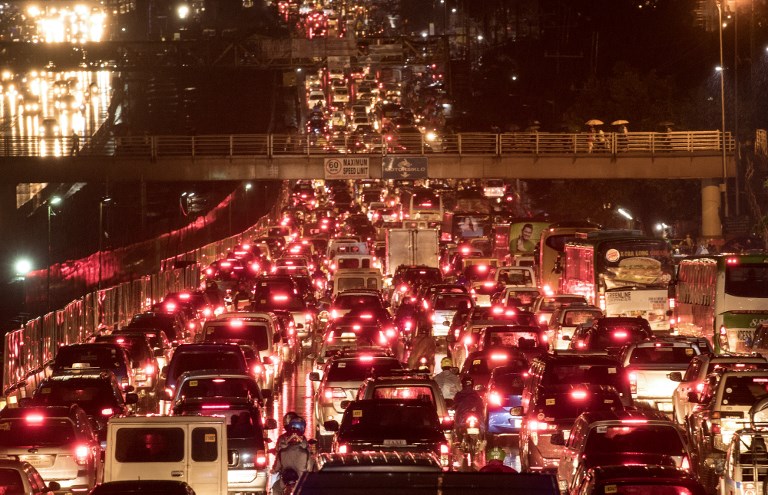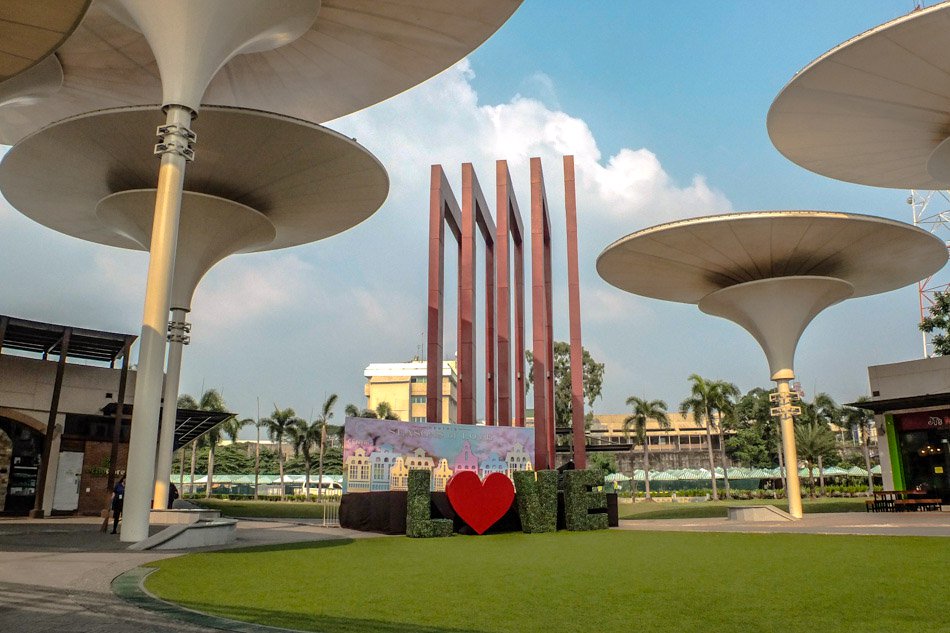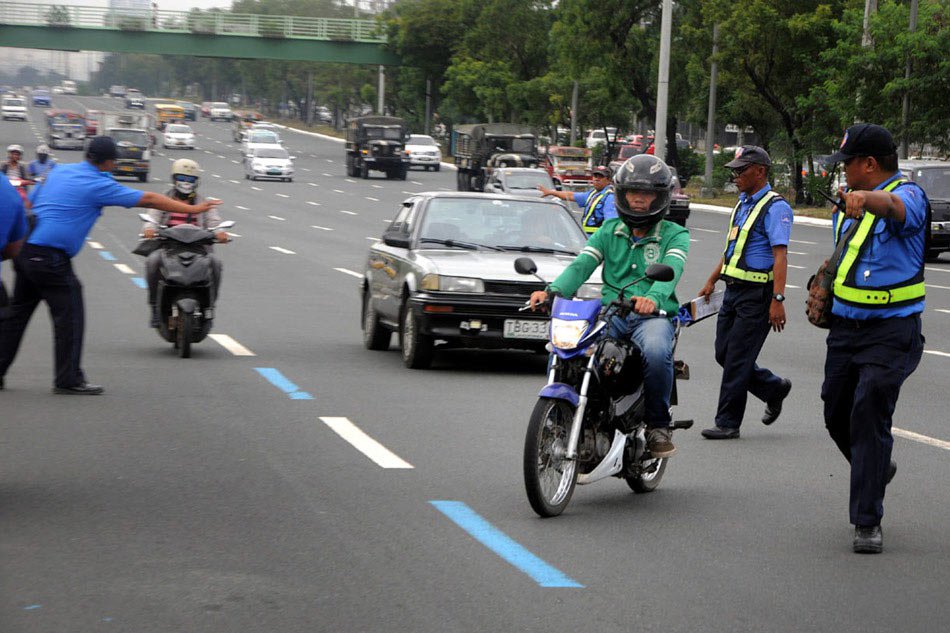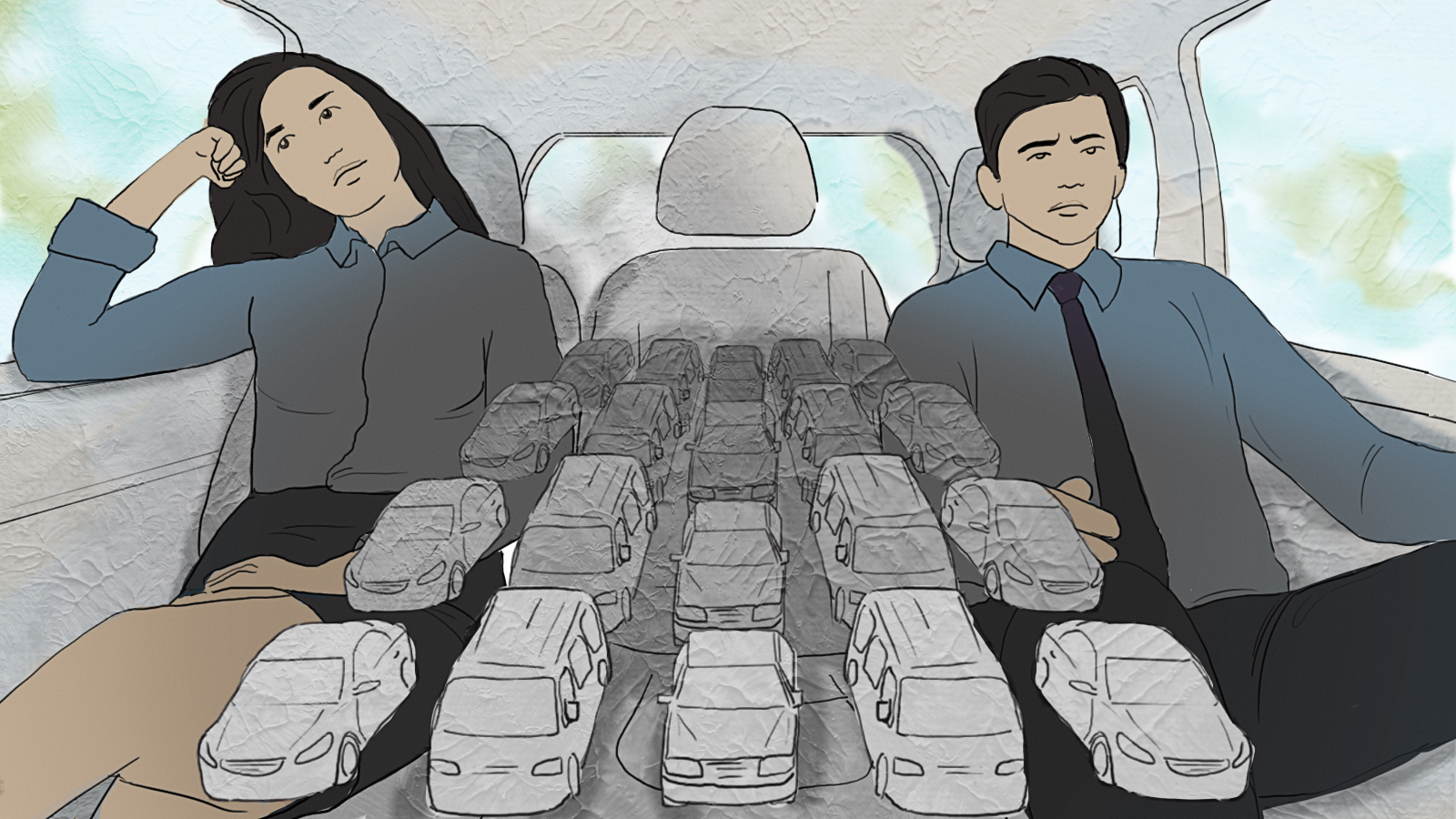Angela*, a 39-year-old advertising executive, is ready for love. She pretty much knows what she’s looking for in a man. “Someone who’s at least five inches taller than me. Someone who smells nice, someone who smells like he just got out of the shower,” she says with a laugh.
There’s a not-so-little problem though: Manila traffic. Angela lives in Cainta, which is about 12 kilometers away from Makati and BGC. She says it can often take up to three hours to get to dates in the CBD (Manila’s central business district) — and it’s been frustrating, to say the least.
“I go out to meet men so I can know the person more. But before I arrive there, I’m already stressed out from the intense traffic. I can’t focus on my date,” she says in a mix of English and Filipino.
In the Philippines, traffic has not just led to billions in economic costs, lost hours, and stress. It has taken a toll on romantic lives. Singles think twice about going out to socialize and meet new people, while those in relationships complain that it can get in the way of meeting up with each other regularly. The traffic makes it hard for Filipinos to find and keep love.
Coconuts Manila spoke to a few single Filipino professionals whose love lives have been severely affected by our city’s nightmarish traffic conditions. Two are actively seeking a serious relationship, and the other almost lost the love of her life because of the city’s soul-crushing traffic jams.
All of them agree — Manila’s roadways are the worst.

Single and ready to mingle
Angela recalled that when her family first moved to Cainta from Quezon City in 2002, traffic wasn’t this bad. Sure, it crawled at a snail’s pace during rush hour, but that was it. Now, the roads are congested almost round-the-clock. Commuting, she said, has become “a pain.”
“Traffic hampers my social life. I think, ‘Should I have coffee with John? Or should I sleep it off?’ It’s two hours going there and two hours going back. It’s always a lot of work,” she said.
But taking the Metro Rail Transit System 3 (MRT-3), the system which traverses the highway EDSA, is out of the question, even if it will cut down on her travel time.
Angela explains: “The level of annoyance that I feel when I’m on a bus or jeepney ride is magnified twice or thrice whenever I take the MRT… I dread, dread using the MRT.”
Her fear is not unfounded. In recent years, the MRT-3 has become notorious for its unreliability. Mechanical issues are the norm — in 2017 alone, it stalled more than 500 times, with 2,000 passengers actually forced to disembark from the aging trains and walk the tracks.

Then, there are the crowds. “I have to psychologically prepare myself whenever I take the MRT so that I don’t get annoyed at people who push me out and at people who push me in. It’s like declaring war against your mind,” she says.
Driving is also out of the question. “I might end up killing someone [because of the traffic]. Or they might kill me,” she said, only half-joking.
So, instead, Angela takes a bus, jeepney, or cab to meet up with her dates. Even then, she often ends up arriving late, or on the dot, with plenty of residual stress on her shoulders. She laughs at the idea of showing up for a date still primped to perfection, and recounts a time when her date showed up looking the opposite of his best.
He had arrived late at the restaurant wearing a polo barong, corporate attire that’s based on the formal national costume. He’d been caught in traffic, looking like he had been to hell and back. The barong was soaked to the point of becoming see-through and clung to his body.
“Oh my god, was it raining?” she remembers asking him.
“No,” he answered. “That’s sweat.”
If it were easier to travel around Manila, Angela thinks she would have met more eligible men at this point. But she’s since discovered that plenty of people limit their search for love to single neighborhoods because of the roadblocks caused by problematic traffic.
She remembered one profile she saw on OkCupid. “Joel of Las Piñas, 36 years old.”
His requirement? “Las Piñas girls only.”
Looking for Maja Salvador
“I want someone who’s fun to be with,” said copywriter and blogger Dale Palisoc. He jokes that his dream girl is Maja Salvador’s character in the movie I’m Drunk, I Love You.
But like Angela, the commute is getting in Palisoc’s way. The 26-year-old lives in Cabuyao, in Laguna, which becomes a two-hour drive from his office in Makati when traffic is particularly bad.
Because most of his Tinder and Bumble matches are from the city, he prefers to meet them in Makati, where many professionals work. But if someone insists on meeting in Quezon City — which could take up to two hours to get to from his office — he thinks twice.

“If it’s a first date, I might make the effort to travel. But if it’s the second and there was no connection during our first meeting, I would have to let it go,” he says.
Palisoc is the kind of millennial who likes to keep busy. He works, he dates, he blogs, and he regularly hits the gym in the early hours of the morning. The traffic often gets in the way of his social life; he’s also not getting enough sleep.
He’s already toyed with the idea of moving to Mandaluyong or Makati to cut down on travel time, and if there were affordable places to stay, he might have already made the move.
Getting a car and driving is not much of a solution. Says Palisoc: “[Even] if I had a car and I was dating someone in the city, there’s no way I’d be getting out of the house! Driving around the city in this traffic situation is a nightmare.”
He’s not lying. A study by Boston Consulting Group found that Manila’s roads are the second-most congested in Southeast Asia, second only to Hanoi.
Traffic could kill
PR executive Johanna Carmina Amancio agrees that Manila’s traffic problem makes relationships difficult.

The 22-year-old spent nine months working as a reporter at a newspaper in Intramuros. The commute from her house in the province of Cavite to her office took almost three hours each way — it took a toll on her well-being, as well as on her relationship with her boyfriend, Gabriel.
She recalls one particularly grueling day that drove her to give up on a job she otherwise enjoyed. She took a bus to go home, exhausted and looking forward to seeing Gabriel for dinner. A storm was raging, but the traffic surrounding Intramuros was lighter than what she expected. Gabriel was already waiting at a restaurant, and she thought she could make it in time.
But then the rainwater started pooling up on the streets, making the roads difficult to navigate. The traffic became worse and started moving at a snail’s space. As she looked at the flood waters lapping against the tires of other vehicles, she realized she wouldn’t make it to dinner.
She called Gabriel on her phone and told him to go home. Their conversation escalated into an argument. Amancio blames the traffic for that argument: “The commute was so long and I started feeling guilty because he was still waiting for me. The traffic … affected our emotions.”
She arrived at the restaurant in Cavite to see Gabriel there, still waiting. Amancio tells us that she sat down and calmly proposed that perhaps it was time for them to break up. They had been dating since high school, and she thought that, at this point, they should concentrate on their careers. Both teary-eyed, they ate their food, which had gone cold.
They eventually reconciled, after Amancio decided that commuting to Intramuros every day for almost 3 hours wasn’t worth it. She quit her job and found a new one in Alabang. That commute takes a little more than an hour, tops.
Amancio says: “I always felt worn-out during those nearly three-hour long commutes even if I was just sitting [inside a bus].”
She sums it up: Manila’s traffic could “kill.”
The problem is Manila
At present, there seems to be no solution in sight to Manila’s traffic problems. Boston Consulting Group estimates that by 2022, the congestion in Manila’s roads will increase to 152 percent of its 2017 levels.
It’s a prediction that just might come into fruition. The Metropolitan Manila Development Authority (MMDA), the agency in charge of managing Metro Manila’s traffic, admits that all of its previous efforts to ease the congestion have proven to be insufficient.

That’s what Emilio Llavor, the MMDA’s project development officer and chief of planning and design, said in an interview with Coconuts this month.
“Although we have done many things, we didn’t ease the traffic in Metro Manila. It’s a reality. But we have done a lot of things [to solve it],” he said in a mix of English and Filipino.
This includes the Unified Vehicular Volume Reduction Program, which Filipinos simply refer to as “color coding,” “number coding,” or the “odd-even scheme.” Implemented in all areas in Metro Manila except Taguig, Muntinlupa, Marikina, and Malabon, it bans a large number of vehicles from major roads on certain days from 7am to 8pm.
The MMDA uses the last number of a vehicle’s plate as its basis: Mondays, it bans vehicles with plate numbers that end in 1 and 2; Tuesdays, 3 and 4 — and so on.
But Llavor thinks the coding scheme isn’t working because many Filipinos just ended up buying second cars so they could drive every day.
“Car distributors are offering low down payments for cars, so it’s very tempting to have a [second] car. People don’t even check if they have a garage [for two cars] or not. Even if there’s the odd-even scheme, [the roads] will be congested, because people are buying [additional cars],” he said.
He’s also heard people complain that the traffic has severely affected their love lives and their overall well-being. He’s not exempted from the harrowing traffic either — he told us he needs to leave his house in Taytay at 4am just so he could be at MMDA’s Makati office by 6am.
But Llavor believes that people would not have problems with traffic if they could only manage their time.
“[It’s all about] time adjustment, time management. Don’t travel during peak hours and be disciplined so that you won’t get into accidents when driving on the road,” he says.
It seems like a simplistic view of the situation. If you’re one of the many people with a 9-to-5 job in the CBD, then not traveling during peak hours isn’t exactly an option. And as Angela the ad executive pointed out to Coconuts, the traffic seems to have become most unbearable during hours when people least expect it.
However, Llavor believes that once the city’s train systems get their much-needed upgrade and major infrastructure developments have been finished, the traffic will ease.
“[But] for now, we can’t promise anything,” he said.
A city of singles

While some Filipino singles struggle to find love because of the inefficiency of the city’s roads, not everyone believes it should be a hindrance to meeting The One. Dating coach Aileen Santos told Coconuts it shouldn’t even be considered in the top 10 obstacles to dating.
“When something is a priority, you find a way,” she said in a recent interview. “When it’s not, you find an excuse. It applies to everything. And that includes dating.”
But the case of Angela and Dale shows that even if dating is a person’s priority, traffic has become a living, breathing force that can dictate who a Filipino meets and how often he or she will go out in the first place.
Angela said that dating apps have made it easier for her to meet new people, but the Philippines’ road conditions and intense traffic delays still make it harder for people like her to find love.
“Yes, we have the technology to make it easy [to meet new people],” she said. “But the Philippines’ own infrastructure cannot accommodate the [dating] technology that we now have.
“The traffic is a huge obstacle [when it comes to dating]. If you live far apart, like someone is in the northern area of EDSA and the other is in the south, good luck.”
Dale is now worried about the upcoming Christmas season, when he expects to be subjected to an endless barrage of inquiries from relatives about when he’s going to get married.
That’s why he’s calling on the government to do its part to fix the traffic, which he feels could give him a better shot at love.
“Fix Metro Manila’s traffic or else it will be a land of singles and unusual relationship setups,” he said. “Making things [relationships] work is a test of its own; the horrible traffic situation shouldn’t make it any harder.”


